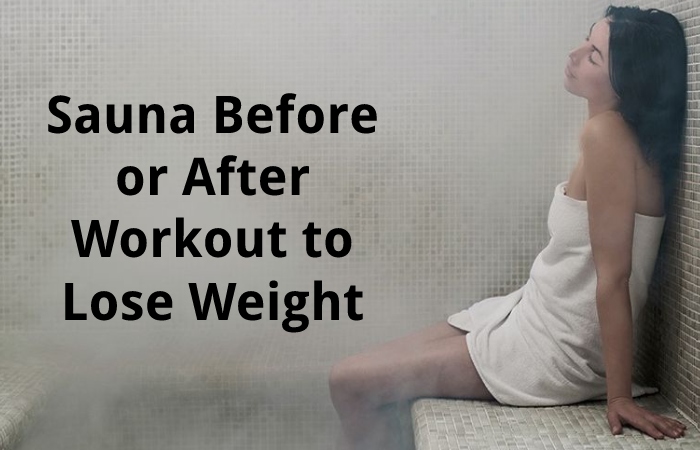Table of Contents
Introduction
Sauna Before or After a Workout- After a workout in the sauna, the breathing stabilizes, the muscles relax and the body, which is dry after sports performance, becomes even more dehydrated. In March, there was news about an older woman dying in a gym’s sauna in the United States. According to the cause of death report, the woman’s kidneys had failed, probably due to dehydration. The sauna’s heat gets the blood circulating and dilates the blood vessels. The flip side is that when the blood vessels expand. the blood circulation in the body should be sufficient, as should the blood pressure. If the blood pressure drops too much, fainting is risky.
Are Saunas Good for You?

You may have heard that stepping into a hot steam bath after a gym session can be calming and detoxifying for your body. For centuries, Scandinavians have used saunas for the purported benefits of cleansing, relaxation, and weight loss. For example, there are around 2 million saunas for 5.2 million people in Finland. The use of saunas in Scandinavian countries begins in early childhood, and current research on the benefits of saunas mix. First, assess your specific health needs if you are considering adding a sauna to your health and wellness routine.
What Does a Sauna Do?

As we have mentioned, there is also weight loss among the many benefits of the sauna. The sauna does not make you lose weight. And the reason is scientific: during the sauna, unlike other physical activities, the muscles do not make any effort, and therefore they lose liquids, not fat. As soon as you drink and eat, the first time after a sauna, you return to the starting weight in a few hours.
Benefits of Sauna After Workout

According to doctors and experts, going into the sauna after a workout in the gym (especially very tiring ones like the GAG ) indicate to avoid excessive muscle fatigue and relax. The high temperatures favor sweating, the disposal of any lactic acid that may have accumulated during the training session, oxygenation of the muscles, and the expulsion of toxins. Blood circulation improves, making the tissues and ligaments more elastic, and this helps prevent painful muscle tears.
Relaxes the muscles: sweating eliminates previously accumulated toxins and lactic acid. Vascular dilation increases muscle oxygenation and, reduces swelling
Detoxifies the body: thanks to sweating, the body is purified by removing toxins, bacteria, and heavy metals,
Eliminates lactic acid: the dry, dry heat of the sauna favors the elimination of lactic acid by dilating the blood vessels and circulating more oxygen which reaches the muscles. Swelling subsides quickly, and post-workout recovery is quicker.
Improves the skin: the heat causes the skin’s pores to dilate. Toxins come out, and dead cells are easily removed. The surface layer is eliminated, leaving room for a younger and more elastic layer
That strengthens the immune system: the body temperature can rise to 3 degrees. The body reacts like when we have a fever. Many bacteria die at 38° and are destroyed.
Sauna Before or After Workout

Regardless of your fitness knowledge level, you probably have some agenda of tasks to complete before and after every single workout. For instance, you might have a custom of guzzling an entire water bottle and powering up with a carb-rich snack before you place your sneakers or slurping down a protein jiggle and foam rolling your quads once you are powered through your HIIT workout.
But should sauna dip, a form of whole-body thermotherapy that includes sitting in a room with a temperature reaching from 113°F to 212°F for unevenly 20 minutes, also be a part of your pre-and post-workout monotonousness? Here, Heather mixture A. Milton, M.S., R.C.E.P., C.S.C.S., a board-certified medical workout physiologist at NYU Langone Health’s Sports Performance Center, disruptions down the possible benefits of taking a steam bath before or after a workout. And how to break safely if you choose to do so.
How Long Should you Stay in a Sauna?
Enjoying the heat and tolerating the heat are individual things, says the honorary chairman of the Finnish Sauna Society, doctor Lasse Vinaka. According to him, there is no absolute upper limit for the sauna, just as there is no definition of what temperature or period a sauna would be the healthiest for a person. However, those who take saunas very often seem to be more beneficial in many respects than those who rarely take saunas.
Finns generally do not lounge for prolonged periods: According to Vinaka, according to a survey conducted in Puhoi’s, Savor, the average lounging time was 14.2 minutes. The temperature in the sauna was slightly below 80 degrees on average. However, there was a significant variation: Some sounded for only a few minutes, some for up to 90 minutes. The higher the temperature, the greater the heat stress. You can stay in an excellent sauna longer than in a hot one, Vinaka states.
Sauna Before or After Workout to Lose Weight

Is it, therefore, true that, by sweating, you lose weight more? Daniela Lucina, Head of the Unit of Exercise Medicine and Functional Pathologies of Humanities and Director of the Specialization School of Sports Medicine and Physical Exercise at the University of Milan.
Weight Loss is not Given by Sweating
Contrary to popular belief, weight loss causes by sweating but by the calories consumed during physical activity. Through sweat, our body loses liquids and mineral salts, not fat, for a straightforward reason: work does not contain any.
Sweating is a vital thermoregulation mechanism: excess heat dipper through the evaporation of the water contained in sweat. This mechanism is essential to avoid an excessive and dangerous rise in body temperature. Since liquids are mainly lost through sweating. It is imperative to replenish them by drinking water during and after training to maintain the water balance. In the risk is that annoying and painful cramps may arise.
Best Time to Use Sauna Before or After Workout

The idea is to go to the sauna 3 to 6 hours after the sport. Of course, this is impractical if the sauna integrates into the best gym where you practice. In this case, take the time to recover 30 minutes after the sport (by taking a shower and talking, for example) before attacking the sauna. One of the most incredible and significant benefits of the sauna after a workout is its effects on muscle recovery. The study mentioned above, for example, demonstrated that 30-minute sessions. In an electromagnetic sauna reduced post-workout muscle soreness and promoted recovery.
The men, in particular, performed better in a countermovement jump test (an exercise that measures lower body power). If when they rested in an infrared sauna after their endurance session of 40 minutes. It than when they had slept in an average room (without a sauna). This finding suggests that infrared saunas help muscles and nerves recover faster after physical activity.
Conclusion
The sauna has been a staple of high-end clubs and gyms since research and experts touted its post-workout benefits. Now might be the time if you’ve never set foot in your establishment’s sauna. But before we get into the benefits (and potential downsides) of using a sauna for recovery. In let’s first look at the different types of saunas you may encounter.

